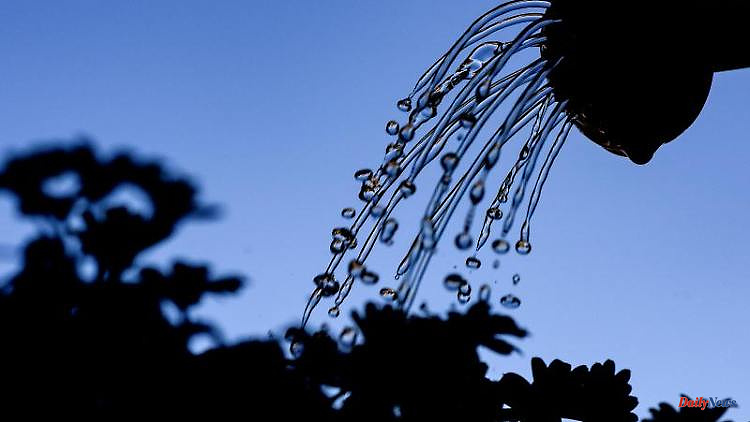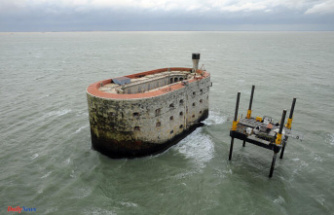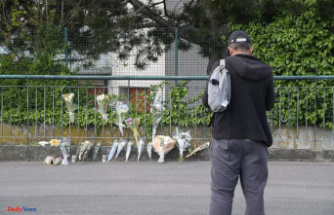While plants in the garden can sometimes do without us even on hot days, balcony plants need water every day when it is hot. An automatic irrigation system can do this.
How many watering cans full of water do you carry onto your balcony every evening in summer? Five, six, seven, eight? This is time-consuming for you and for a plant sitter who has to make an extra trip to the apartment during the summer vacation. But there is a solution: automatic balcony irrigation. One model was tested for almost two summers.
The device:
The basic set of the "City Gardening Balcony Irrigation" from Gardena has 25 drip units for five to six meters in the flower box. Or just for 25 plants. The system has a pump and can be expanded to up to 40 drip units.
A control module offers 14 different irrigation programs, a socket is required. The system does not need a water connection on the balcony for this. You have to set up a water container, which is not included in the set. The pump transports the water from the container drop by drop directly to the plants via small black hoses. According to Gardena, the in-line drip heads can dispense up to two liters of water per hour.
The costs:
According to the Gardena website, you pay 149.99 euros for the basic set. The system is also available online for just under 100 euros (as of August 2022).
The drip irrigation:
The system releases the water drop by drop to the ground - right on the plant, above its roots. Therefore, more irrigation water comes directly to the plant, which means that the amount of water can be reduced overall. Because on hot days in particular, a large part of the poured water otherwise evaporates in the air before the soil and consequently the roots of the plants can absorb it.
In addition, water can be saved by watering at times when the air and soil are as cool as possible, so that less water evaporates. This is usually the case early in the morning. Because late in the evening, the ground and air are usually still too warm after hot summer days.
The structure:
The construction of the irrigation system is something for hobbyists and fans of technical gadgets. It is cut, laid, inserted and pushed back and forth a lot. But don't worry, the setup isn't rocket science at all. You don't need DIY skills or electrical knowledge. Just some time and patience.
When installing the Gardena system for the first time, an hour is quickly gone just thinking about where the rain barrel, the hoses and the power cable should be. And another hour is spent cutting, laying and fastening the distribution pipes.
Dismantling in the fall is quick. Next spring you have to put the puzzle together again. That can be a little more nerve-wracking, because the hoses are already cut into sections that don't fit at every point.
The settings:
There are 14 programs that release the irrigation water at different intervals and time periods. You can start the irrigation directly with a turn of the control module or set a rhythm of 4, 6, 8, 12, 24, 48 and 72 hours. In addition, the system can supply water for one, three or six minutes. But what do you choose? This question arises after the first installation - there is no information about it at first.
After weeks of testing, the semi-shady test balcony with 32 plants is now being watered once a day for three minutes at a time in midsummer. But the system starts at around 3 a.m. - when the temperatures, and thus evaporation, are as low as possible. On rainy days, the system is off, on cool days it is only turned on when needed.
When asked, Gardena recommends watering every twelve hours on hot summer days, including once early in the morning. For plants that need a lot of water, such as tomatoes, you should choose a watering time of six minutes.
Plants that require little water, such as herbs, can only be watered once a day for six minutes. For different watering intervals on a balcony, however, you would need two watering sets.
Our advice: try out what your own balcony needs depending on the location, sunny and shady sides, wind and planting. If excess water runs out of the vessels, you can switch off and stop the time. Plants with a higher water requirement can also get a sip from the pot.
Anyway, on very hot summer days, it can be worth turning the system on again briefly after 15 minutes. Because dry soil can only gradually absorb the irrigation water and store it for the roots, which then absorb it. If you give a lot of water at once, something that the earth could actually absorb runs through it.
The time switch:
The tester had high hopes for this - and was partly disappointed. On the one hand, the integrated timer is very practical for those who want to water in a water-saving manner and for the benefit of the plants in the middle of the night. On the other hand, you have to set the alarm at this bedtime at least once in order to set the desired start time. Because there is no function with which you can set it to start at 3.45 in the morning, for example.
The same everyday hurdle arises when you want to save water on rainy days or in cooler weather periods and switch off the system from time to time or want to adjust the settings.
Here you have to bite the bullet: Either you keep getting up at night to set the desired time. Or you then do without watering the plants at night and switch to a watering time at seven in the morning, for example. Even then, the plants still get a lot of water without evaporation.
The water supply of the plant:
A water reservoir on the balcony needs space, which not everyone has. But it doesn't have to be a large rain barrel like you might have in the garden. For example, Gardena suggests using a beautiful trough with the volume of a large flower pot as a water reservoir. It acts both as a decoration and as a kind of mini pond on the balcony. You also do something good for the insects that can refresh themselves during the day.
The solution on the test balcony is a converted plastic storage box with a lid to prevent evaporation and childproofing. It's black and flat enough to blend in with a few larger flowerpots.
Two holes are drilled in the cover for the supply line to the plants and the power cable to the pump and a connection hose to the rain gutter. The latter was also a bit of handicraft work, but it's worth it: on the test balcony, free rainwater covers most of the summer's water requirements.
This water reservoir with about 55 liters is enough for about ten days with a watering time of three minutes once every 24 hours. With this amount of water, the plants also survive temperatures of over 30 degrees. If it doesn't rain in the meantime, the bin is refilled with a watering can. But often that doesn't happen.
What might not like:
The optics
You can see the water pipes very clearly, they hang from pot to pot. This can be annoying and was repeatedly addressed by guests on the test balcony. The hoses in the flower box could also entice small children and cats to play. But the grown-up balcony dwellers now overlook them.
A tip if the power line from the socket to the pump runs directly past the balcony door, for example: insert it into pipe insulation that matches the color of the balcony or an empty pipe from the hardware store and attach it unobtrusively under the doorstep or on the edge of the balcony.
The sound of the pump
The pump works with a kind of whirring noise. But in the test, neither adult family members nor a baby woke up - although the balcony is directly in front of the open bedroom window.
Conclusion:
The supply of the plants via an automatic balcony watering system is simple, reliable and saves a lot of carrying watering cans. Practical for everyone who doesn't see this daily task as part of their gardening hobby. In addition, such systems are good for everyone who likes to travel a lot in summer. In addition, you can save water on hot summer days.
Alternatives:
There are still a few balcony solutions on the market. An alternative for locations without electricity is the Blumat drip system, which does not require a pump. The water comes into the hoses through the pressure of a higher water reservoir, clay cones are stuck in the flower pot. Alternatively, the system can be connected to a water tap.
The "irrigation set" from GIB Industries supplies each plant individually via a hose, which is why the system is more suitable for groups of plants that are arranged around a pump. It requires a power connection and a water tank.












